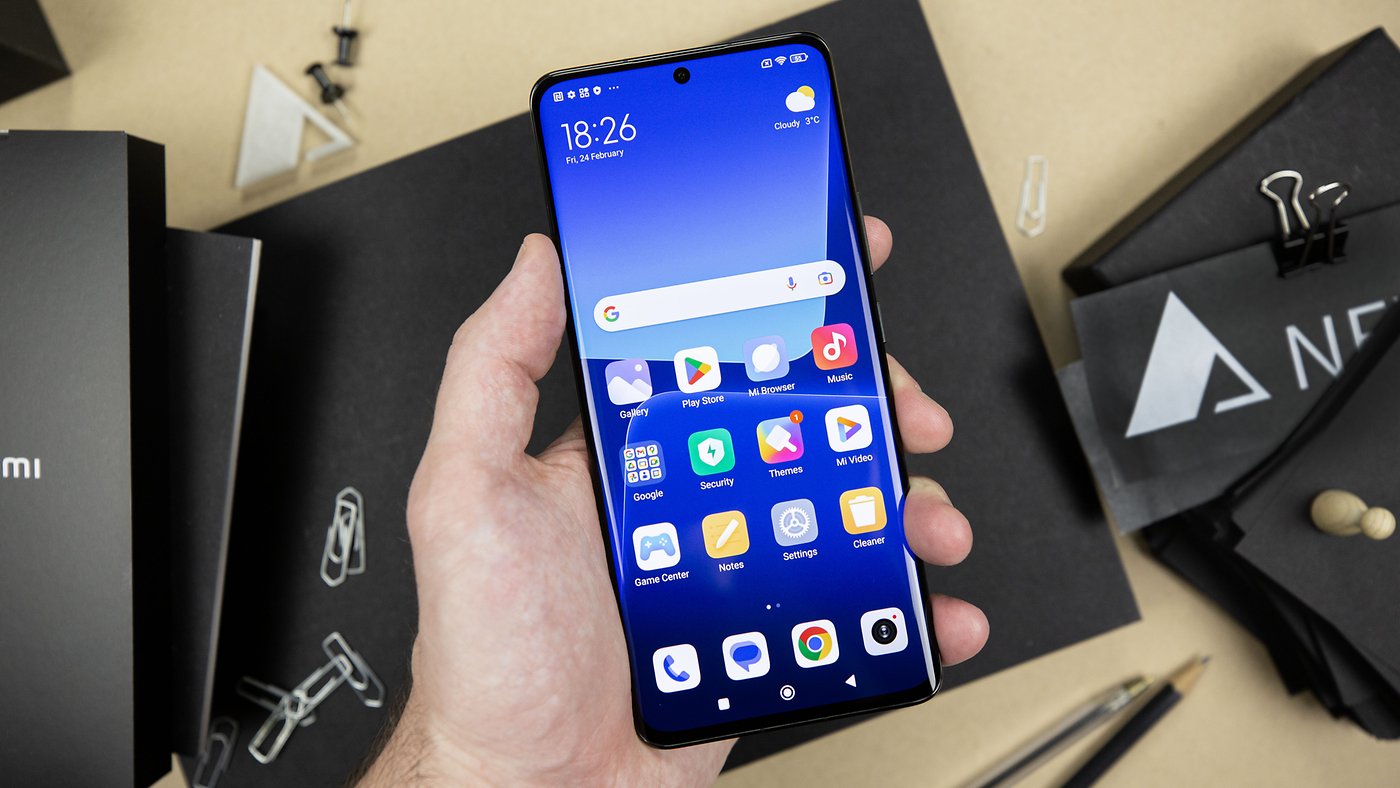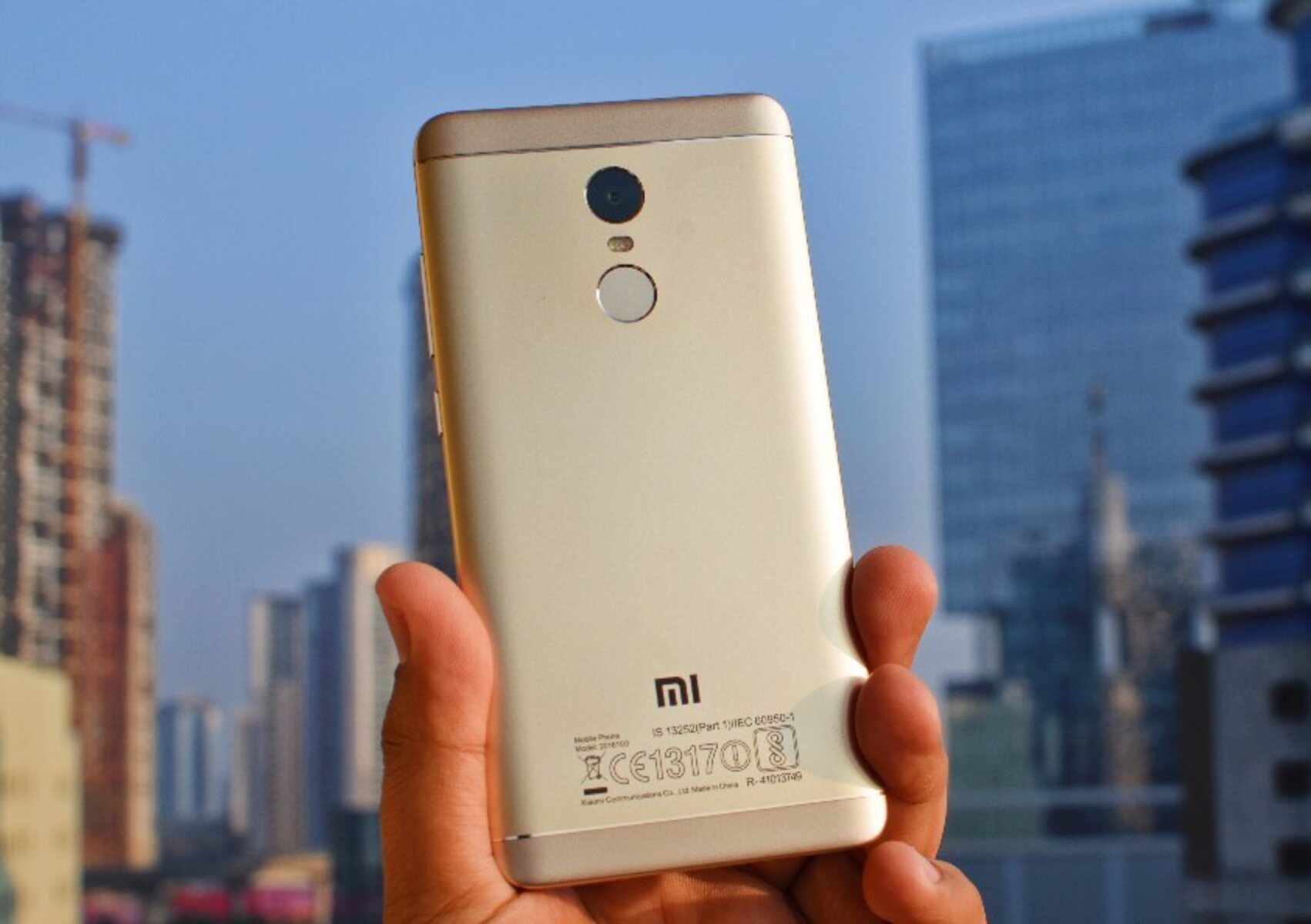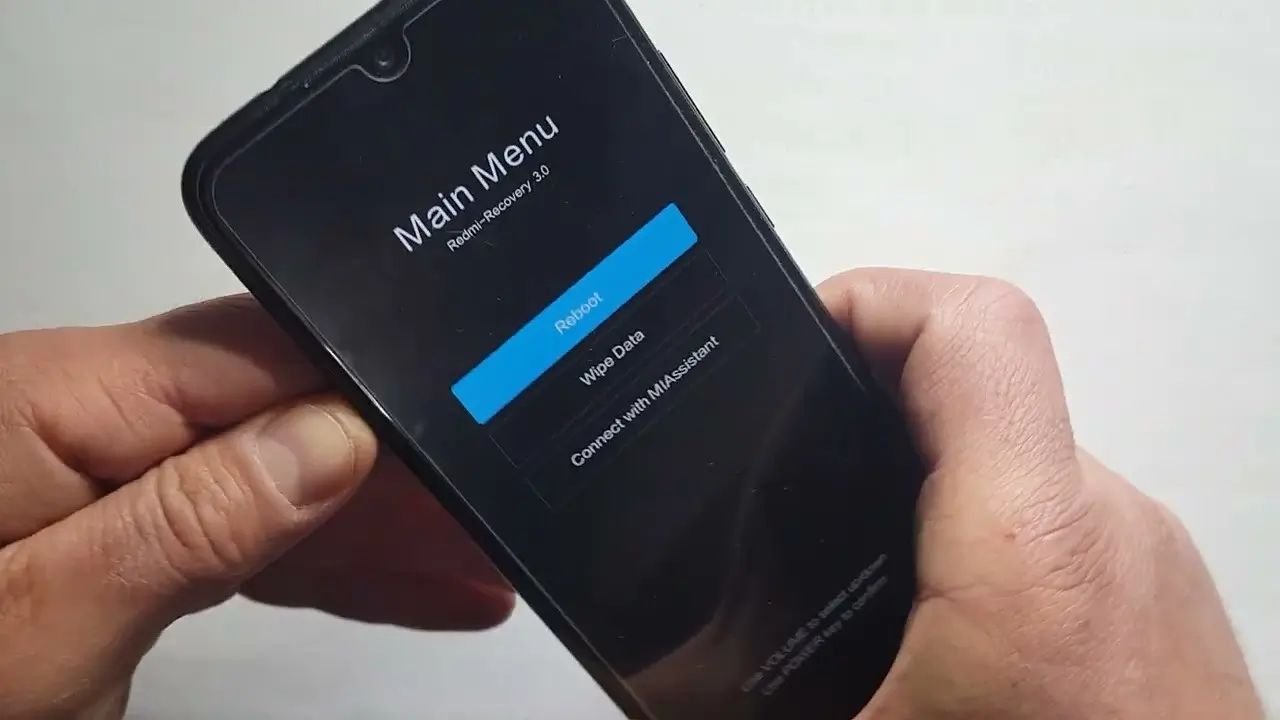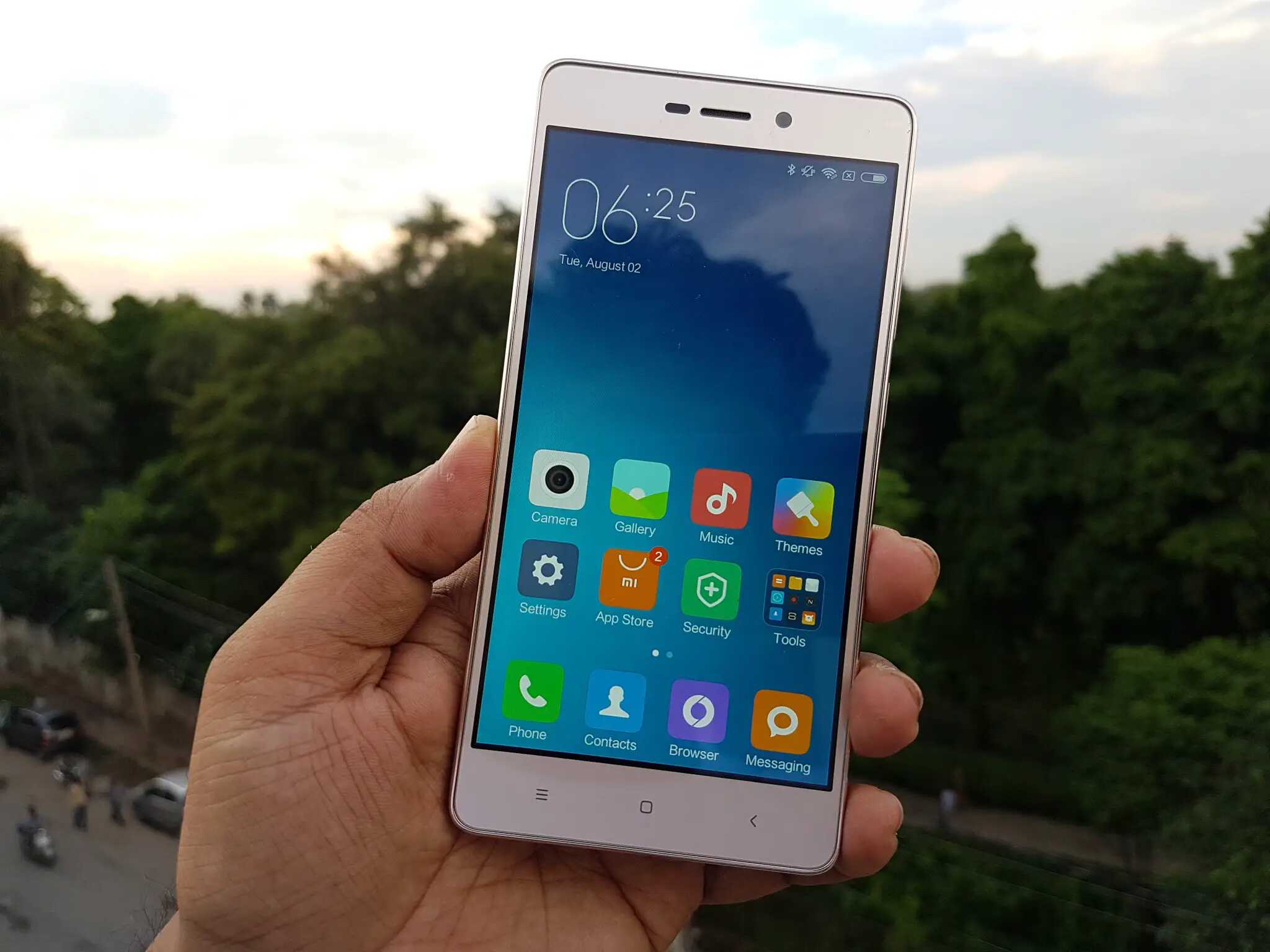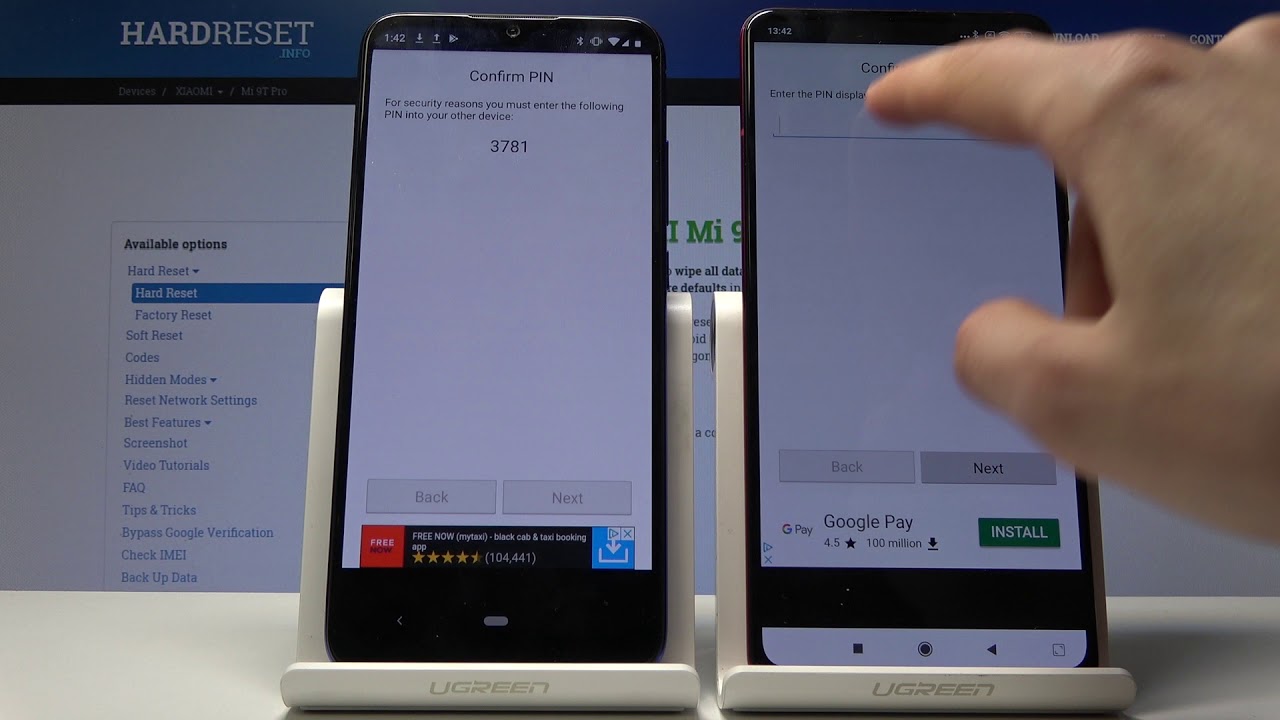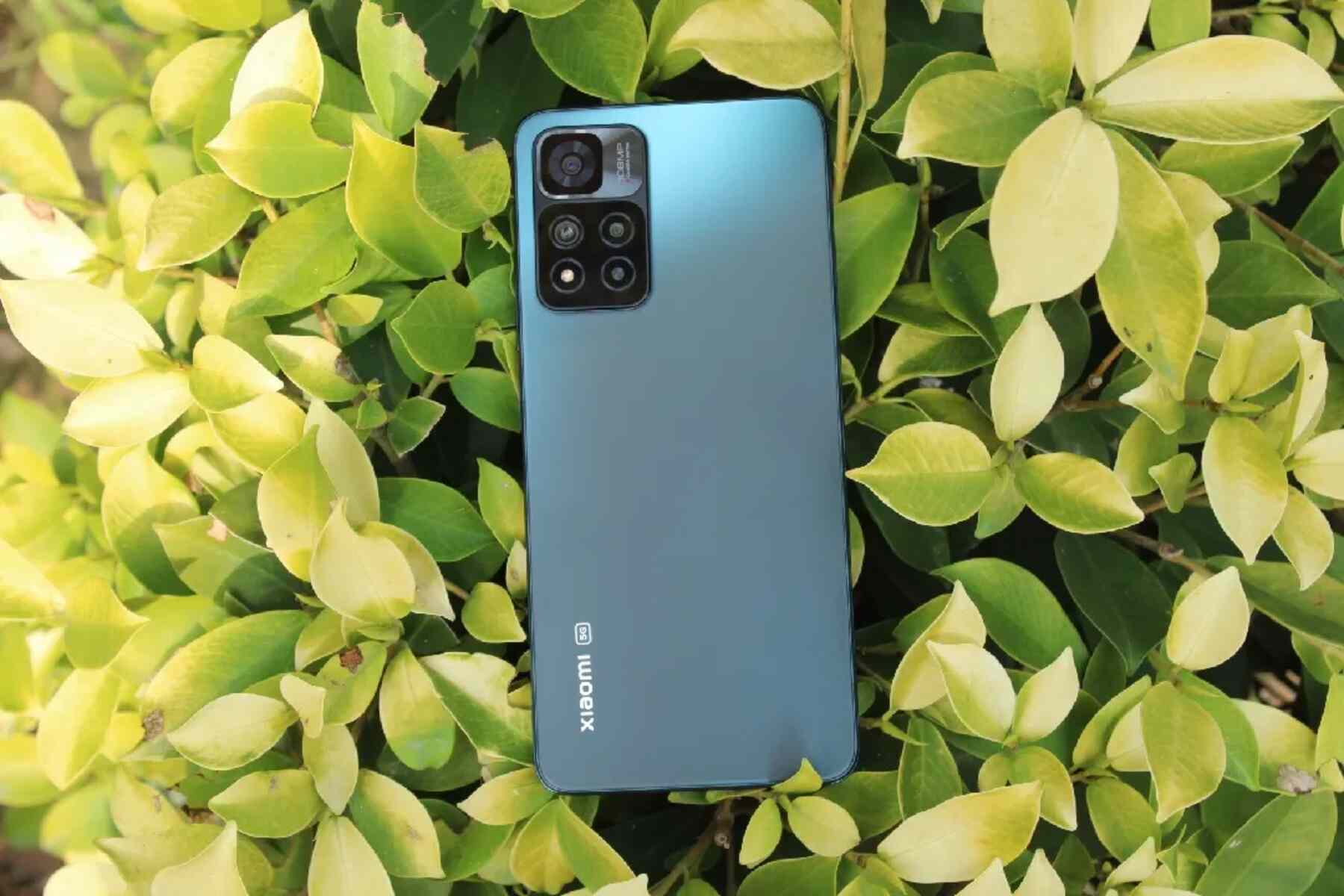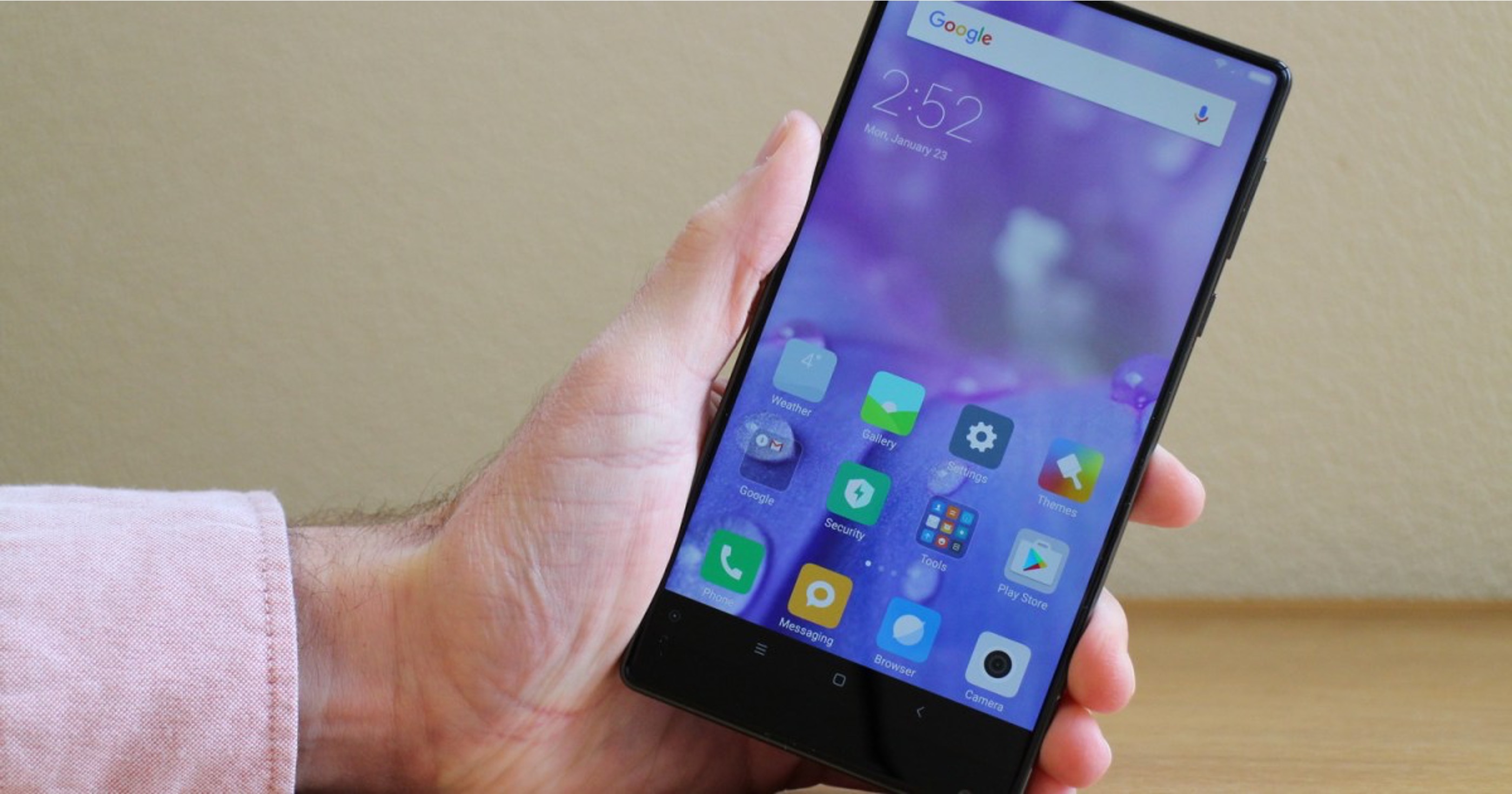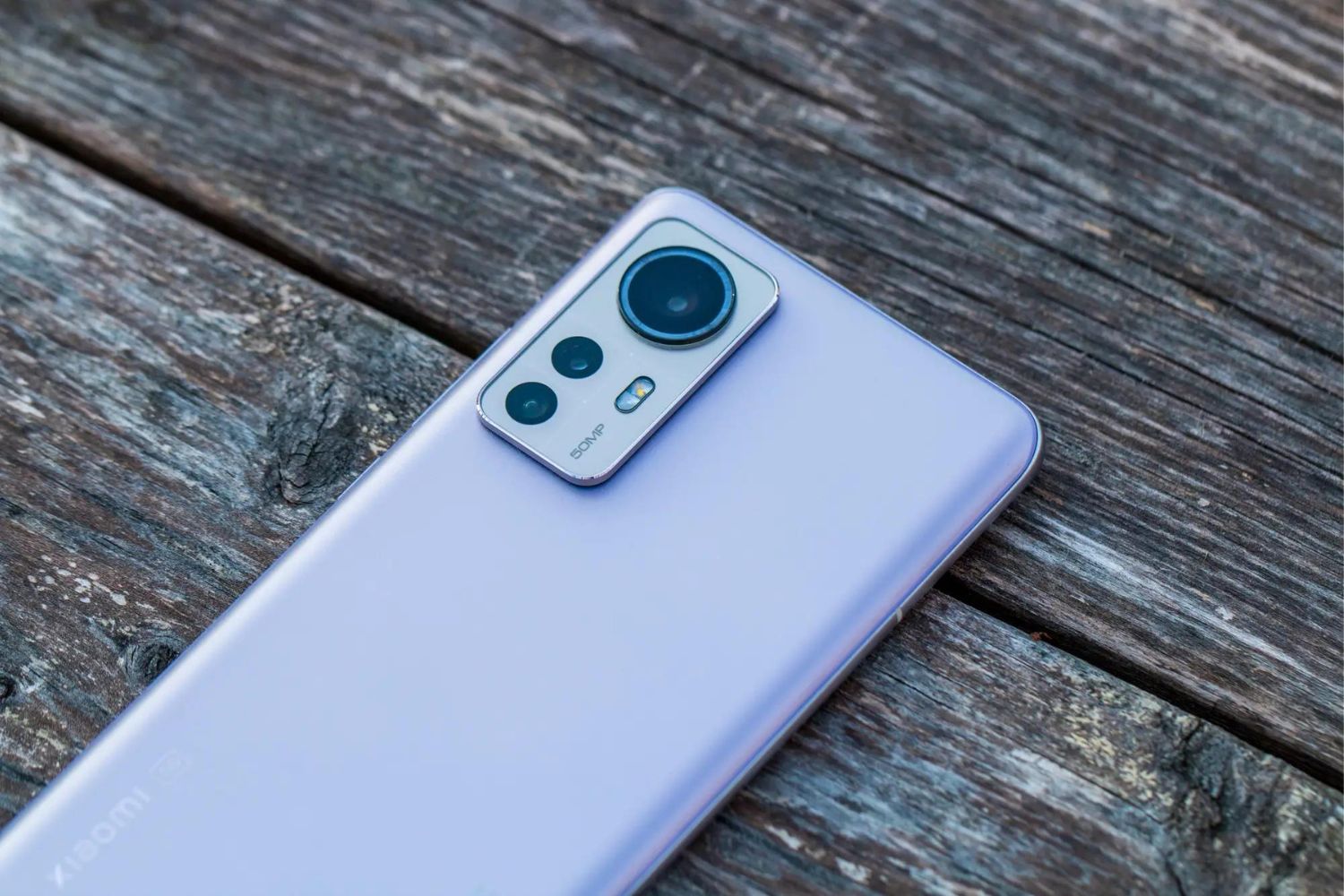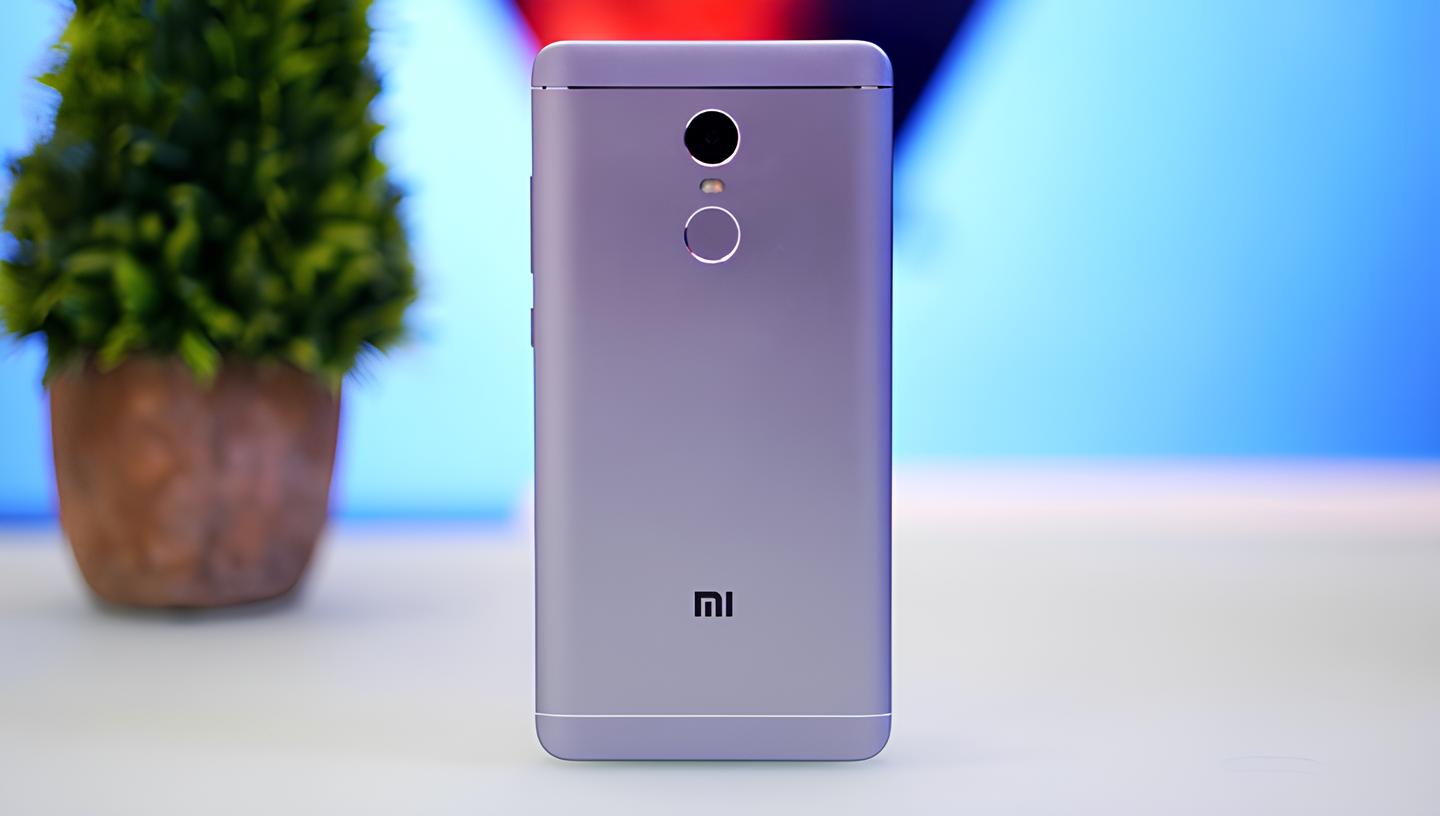Introduction
In today's fast-paced digital world, our smartphones have become an integral part of our daily lives. Xiaomi devices, known for their innovative features and user-friendly interface, have gained immense popularity among tech-savvy individuals. However, with the increasing reliance on smartphones for storing important data, it has become crucial to prioritize the security and integrity of the information stored on these devices.
Backing up your Xiaomi device is a fundamental aspect of device management that ensures the safety of your valuable data. Whether it's cherished photos, important contacts, or vital documents, the loss of such data due to unforeseen circumstances can be distressing. Therefore, understanding the significance of creating regular backups and knowing the various methods available for this purpose is essential for every Xiaomi device user.
This comprehensive guide aims to provide Xiaomi device users with a complete understanding of the importance of backing up their devices and the various methods available for creating backups. By exploring the methods of utilizing Mi Cloud, Google Account, and third-party apps for backing up Xiaomi devices, users will gain valuable insights into safeguarding their data effectively.
Moreover, this guide will delve into the process of restoring a Xiaomi device from a backup, ensuring that users are equipped with the knowledge to seamlessly recover their data in the event of a device malfunction or data loss. By following the step-by-step instructions and best practices outlined in this guide, Xiaomi device users can proactively safeguard their data and enjoy peace of mind knowing that their valuable information is secure.
As we embark on this journey to explore the world of Xiaomi device backups, it's important to recognize the empowering nature of knowledge and preparedness. By taking proactive measures to back up your Xiaomi device, you are not only safeguarding your data but also embracing a proactive approach to device management that enhances your overall digital experience. Let's delve into the realm of Xiaomi device backups and empower ourselves with the knowledge to protect and preserve our digital lives.
Part 1: Understanding the Importance of Backing Up Your Xiaomi Device
Backing up your Xiaomi device is not just a precautionary measure; it is a proactive approach to safeguarding your valuable data. In today's digital age, our smartphones serve as repositories of cherished memories, essential documents, and vital information. However, the vulnerability of digital devices to unforeseen events such as hardware malfunctions, software glitches, or accidental damage underscores the critical need for creating regular backups.
Imagine the distress of losing irreplaceable photos capturing precious moments, important contacts, or crucial documents due to an unexpected device failure. This is where the significance of backing up your Xiaomi device becomes evident. By creating backups, you ensure that your data is securely stored in an alternate location, ready to be retrieved in the event of a device malfunction or data loss.
Moreover, the process of backing up your Xiaomi device empowers you to seamlessly transition to a new device without the fear of losing your valuable data. Whether upgrading to a new Xiaomi model or replacing a damaged device, having a recent backup ensures a smooth and stress-free transition, allowing you to pick up right where you left off.
Furthermore, the security aspect cannot be overlooked. With the increasing prevalence of cybersecurity threats and data breaches, the importance of securing your personal and sensitive information cannot be overstated. By creating backups of your Xiaomi device, you mitigate the risk of data loss due to security breaches, ensuring that your information remains protected and accessible only to you.
In essence, understanding the importance of backing up your Xiaomi device transcends the realm of data protection; it embodies a proactive mindset towards digital device management. It signifies a commitment to preserving your digital legacy, protecting your valuable data, and embracing a seamless digital experience. As we delve deeper into the methods and best practices for creating backups, it's essential to recognize that the act of backing up your Xiaomi device is not merely a task; it is a proactive stance towards safeguarding what matters most to you.
Part 2: Methods for Backing Up Your Xiaomi Device
When it comes to backing up your Xiaomi device, you have several reliable methods at your disposal, each offering unique advantages and flexibility. Understanding these methods empowers you to choose the approach that best aligns with your preferences and requirements. Let's explore the diverse methods for backing up your Xiaomi device:
1. Mi Cloud:
Mi Cloud, Xiaomi's proprietary cloud storage service, offers a seamless and integrated solution for backing up your device. By utilizing Mi Cloud, you can securely store your contacts, messages, call logs, photos, videos, and more in the cloud, ensuring that your data remains accessible across devices and protected from unforeseen events. To initiate a backup using Mi Cloud, navigate to Settings > Mi Account > Mi Cloud, and select the data types you wish to back up. Once configured, your Xiaomi device will automatically synchronize the selected data with your Mi Cloud account, providing a convenient and reliable backup solution.
2. Google Account:
Leveraging your Google Account for backing up your Xiaomi device provides a versatile and cross-platform approach to safeguarding your data. By enabling Google Backup, your device settings, app data, call history, and more are securely stored in your Google Account, ensuring seamless data restoration across compatible devices. To enable Google Backup, navigate to Settings > Additional Settings > Backup & reset, and select "Backup to Google Drive." This method not only facilitates effortless data backup but also streamlines the process of transitioning to a new device or restoring data on a different Android device linked to your Google Account.
3. Third-Party Apps:
In addition to the native backup solutions offered by Mi Cloud and Google Account, you can explore third-party backup apps available on the Google Play Store. These apps offer a wide range of features, including customizable backup schedules, selective data backup, and cross-platform compatibility. Popular third-party backup apps such as Titanium Backup, Helium, and Super Backup provide users with advanced backup options, allowing for greater control over the backup process and the ability to store data locally or in the cloud.
By familiarizing yourself with these diverse methods for backing up your Xiaomi device, you gain the flexibility to choose the approach that best suits your preferences and aligns with your data management needs. Whether opting for the seamless integration of Mi Cloud, the cross-platform convenience of Google Account backup, or the advanced features offered by third-party backup apps, you can proactively safeguard your valuable data and embrace a proactive approach to device management.
Part 3: Using Mi Cloud for Backing Up Your Xiaomi Device
Mi Cloud, Xiaomi's proprietary cloud storage service, offers a seamless and integrated solution for backing up your Xiaomi device. This comprehensive backup method allows you to securely store various types of data, including contacts, messages, call logs, photos, videos, and more in the cloud. By utilizing Mi Cloud, you can ensure that your data remains accessible across devices and is protected from unforeseen events such as device malfunctions or data loss.
To initiate a backup using Mi Cloud, follow these simple steps:
-
Access Mi Cloud Settings: Navigate to the Settings menu on your Xiaomi device and select "Mi Account." From there, tap on "Mi Cloud" to access the cloud storage settings.
-
Select Data Types for Backup: Within the Mi Cloud settings, you can choose the specific data types that you wish to back up. This includes options to back up contacts, messages, call logs, photos, videos, and more. By customizing your backup preferences, you can ensure that your most valuable data is securely stored in the cloud.
-
Initiate Backup Process: Once you have configured your backup preferences, initiate the backup process by selecting the "Backup now" option. This prompts your Xiaomi device to synchronize the selected data with your Mi Cloud account, ensuring that your information is securely backed up in the cloud.
-
Automatic Synchronization: Mi Cloud offers the convenience of automatic synchronization, allowing your device to regularly back up the selected data types without manual intervention. This automated process ensures that your data remains up to date and securely stored in the cloud, providing peace of mind regarding the safety of your information.
By utilizing Mi Cloud for backing up your Xiaomi device, you benefit from a user-friendly and integrated solution that seamlessly safeguards your data. The convenience of automatic synchronization, coupled with the ability to customize backup preferences, empowers you to proactively protect your valuable information. Additionally, Mi Cloud's cross-device accessibility ensures that your data remains readily available across compatible Xiaomi devices, further enhancing the versatility and practicality of this backup method.
In summary, Mi Cloud serves as a reliable and comprehensive backup solution for Xiaomi device users, offering seamless integration, customizable backup options, and cross-device accessibility. By leveraging Mi Cloud, you can proactively safeguard your data, ensuring that your valuable information remains secure and accessible across devices.
Part 4: Using Google Account for Backing Up Your Xiaomi Device
Leveraging your Google Account for backing up your Xiaomi device provides a versatile and cross-platform approach to safeguarding your data. By enabling Google Backup, your device settings, app data, call history, and more are securely stored in your Google Account, ensuring seamless data restoration across compatible devices.
To initiate the backup process using your Google Account, follow these straightforward steps:
-
Access Backup Settings: Navigate to the Settings menu on your Xiaomi device and select "Additional Settings." From there, tap on "Backup & reset" to access the backup settings.
-
Enable Google Backup: Within the backup settings, select "Backup to Google Drive" and ensure that the toggle switch is activated. This enables your Xiaomi device to securely back up essential data to your Google Account, providing a reliable storage solution.
-
Customize Backup Preferences: Google Backup allows you to customize your backup preferences, enabling you to select the types of data you wish to back up. This includes app data, device settings, call history, contacts, and more, empowering you to tailor the backup process according to your specific requirements.
-
Automatic Backup: Once Google Backup is enabled, your Xiaomi device will automatically initiate the backup process based on the configured preferences. This automated approach ensures that your data remains securely stored in your Google Account, ready to be restored when needed.
By utilizing your Google Account for backing up your Xiaomi device, you benefit from a seamless and integrated solution that ensures the security and accessibility of your data. The cross-platform compatibility of Google Backup allows for effortless data restoration across compatible Android devices linked to your Google Account, facilitating a smooth transition and data synchronization.
In summary, leveraging your Google Account for backing up your Xiaomi device provides a convenient and versatile solution that aligns with the interconnected nature of digital devices. By enabling Google Backup and customizing your backup preferences, you can proactively safeguard your valuable data, ensuring that it remains securely stored and accessible across compatible devices.
Part 5: Using Third-Party Apps for Backing Up Your Xiaomi Device
In addition to the native backup solutions offered by Mi Cloud and Google Account, Xiaomi device users have the option to explore third-party backup apps available on the Google Play Store. These apps offer a wide range of features, including customizable backup schedules, selective data backup, and cross-platform compatibility, providing users with advanced backup options and greater control over the backup process.
Third-party backup apps such as Titanium Backup, Helium, and Super Backup have garnered popularity among Android users for their comprehensive backup functionalities. These apps empower Xiaomi device users to tailor their backup preferences, ensuring that specific data types, including app data, system settings, and multimedia content, are securely backed up according to individual requirements.
One of the key advantages of utilizing third-party backup apps is the flexibility they offer in terms of data storage options. Users can choose to store their backups locally on the device's internal storage or external SD card, providing an additional layer of control over their data management. Furthermore, some third-party backup apps integrate cloud storage services, allowing users to securely store their backups on popular cloud platforms such as Google Drive, Dropbox, or OneDrive.
The ability to schedule automated backups at regular intervals is another notable feature offered by third-party backup apps. This functionality ensures that users can establish a recurring backup routine, providing peace of mind regarding the consistent protection of their data. Additionally, selective data backup options enable users to choose specific apps or data types for backup, optimizing storage space and streamlining the backup process.
Cross-platform compatibility is a significant advantage of third-party backup apps, as they facilitate data migration and restoration across various Android devices. This interoperability ensures that users can seamlessly transfer their backups to new devices or restore data on different Android devices, enhancing the overall flexibility and convenience of the backup process.
By leveraging third-party backup apps, Xiaomi device users can benefit from advanced backup features, customizable options, and diverse storage solutions, empowering them to proactively safeguard their valuable data. The availability of these apps on the Google Play Store provides users with a diverse selection of backup solutions, allowing them to choose the app that best aligns with their preferences and data management needs.
In summary, third-party backup apps offer Xiaomi device users an array of advanced features, customizable backup options, and flexible storage solutions, enhancing the overall backup experience and empowering users to take proactive measures in securing their data.
Part 6: Restoring Your Xiaomi Device from a Backup
Restoring your Xiaomi device from a backup is a seamless process that allows you to retrieve your valuable data and settings in the event of a device reset, upgrade, or replacement. Whether you have previously created backups using Mi Cloud, Google Account, or a third-party backup app, the restoration process ensures that your data is efficiently transferred back to your device, enabling you to resume your digital experience without missing a beat.
Restoring from Mi Cloud Backup:
If you have utilized Mi Cloud for backing up your Xiaomi device, the restoration process is straightforward and user-friendly. Upon setting up a new or reset device, you will be prompted to sign in to your Mi Account. During the setup process, you can choose to restore your data from a previous Mi Cloud backup, allowing you to seamlessly retrieve your contacts, messages, photos, and more. Once the restoration is initiated, your device will synchronize with your Mi Cloud account, ensuring that your data is efficiently restored to its previous state.
Restoring from Google Account Backup:
For Xiaomi device users who have leveraged their Google Account for backup, the restoration process involves signing in to the same Google Account on the new or reset device. Upon signing in, you will be prompted to restore your device from the most recent Google Backup. This streamlined process ensures that your app data, device settings, call history, and other backed-up information are seamlessly transferred to the device, providing a familiar and personalized experience.
Restoring from Third-Party Backup Apps:
If you have opted for a third-party backup app to safeguard your data, the restoration process typically involves reinstalling the backup app on your device. Once the app is installed, you can access the backup files stored locally or in the cloud and initiate the restoration process. These apps often provide intuitive interfaces for selecting specific data types or apps to restore, allowing for a tailored and efficient restoration experience.
By understanding the restoration process for different backup methods, Xiaomi device users can confidently navigate the transition to a new device or the restoration of a reset device. The ability to seamlessly retrieve valuable data and settings from backups underscores the importance of proactive data management and empowers users to maintain continuity in their digital experiences.
In essence, the restoration process serves as a pivotal component of the backup strategy, ensuring that users can effectively retrieve their data and settings when needed, thereby preserving the integrity of their digital information.
Conclusion
In conclusion, the process of backing up your Xiaomi device is not merely a technical task; it embodies a proactive stance towards safeguarding what matters most to you in the digital realm. By understanding the importance of creating regular backups and exploring the diverse methods available for this purpose, Xiaomi device users can proactively protect their valuable data and ensure a seamless digital experience.
The significance of backing up your Xiaomi device transcends the realm of data protection; it embodies a commitment to preserving your digital legacy and embracing a proactive approach to device management. Whether it's cherished memories captured in photos, essential contacts, or critical documents, the act of creating backups safeguards these valuable assets from unforeseen events such as device malfunctions, data loss, or security breaches.
By delving into the methods for backing up a Xiaomi device, including leveraging Mi Cloud, Google Account, and third-party backup apps, users gain the flexibility to choose the approach that best aligns with their preferences and data management needs. The seamless integration of Mi Cloud, the cross-platform convenience of Google Account backup, and the advanced features offered by third-party backup apps empower users to proactively safeguard their valuable data, ensuring that it remains secure and accessible across devices.
Furthermore, the restoration process, which allows users to retrieve their valuable data and settings from backups, underscores the importance of proactive data management. Whether transitioning to a new device or restoring a reset device, the ability to seamlessly retrieve valuable data and settings from backups ensures continuity in the digital experience.
In essence, the act of backing up your Xiaomi device is a proactive measure that empowers users to protect their digital lives, preserve their valuable data, and embrace a seamless digital experience. By prioritizing the security and integrity of their information, Xiaomi device users can navigate the digital landscape with confidence, knowing that their data is securely backed up and readily accessible when needed.







